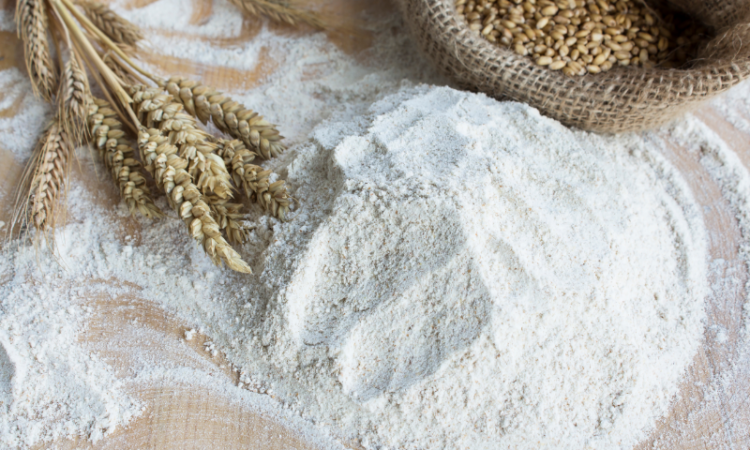
Whole-wheat grain is often celebrated for its health benefits, providing more nutrients and fibre than refined grains. However, despite its popularity, there are common misuses of whole-wheat grain that can compromise the quality of baked goods, particularly pastries. Understanding these pitfalls and how to avoid them is essential for anyone looking to create delicious and nutritious pastries using whole-wheat flour.
Without further ado, let us explore common misuses, practical tips for enhancing your pastry with whole-wheat grain, and provide some wholemeal flour recipes and whole grain bread recipes to help you get started.
Understanding Whole-Wheat Grain: A Nutritious Powerhouse
Whole-wheat grain is a staple in many kitchens due to its nutritional value. Unlike refined grains, whole-wheat grain retains the bran, germ, and endosperm, offering a richer source of fibre, vitamins, and minerals. However, its unique properties can also present challenges when used in baking, particularly in pastries, which require a delicate balance of texture and flavour.
Common Misuse 1: Overloading with Whole-Wheat Grain
One of the most common mistakes when using whole-wheat grain in pastry is overloading the recipe with it. While it might seem beneficial to use more whole-wheat flour for added nutrients, this can lead to dense, dry, and heavy pastries. Whole-wheat flour absorbs more liquid than white flour, so simply substituting it one-to-one can result in a dough that lacks the moisture needed for light, flaky pastries. To avoid this, consider using a blend of whole-wheat and white flour or adjust the liquid content in your recipe to compensate for the additional absorption.
Common Misuse 2: Ignoring the Need for Resting Time
Whole-wheat flour has a higher gluten content than refined flour, which can cause the dough to become tough if overworked. Many bakers make the mistake of not allowing the dough to rest after mixing, which is crucial when working with whole-wheat grain. Resting the dough helps to relax the gluten, making it easier to roll out and resulting in a more tender pastry. For best results, allow the dough to rest for at least 30 minutes before rolling it out.
Enhancing Your Pastry with Whole-Wheat Grain
Tip 1: Incorporate Whole-Wheat Grain Gradually
If you are new to baking with whole-wheat grain, it’s wise to start slowly. Begin by substituting a portion of the white flour in your recipe with whole-wheat flour, gradually increasing the amount as you become more comfortable with its properties. This approach allows you to get accustomed to the differences in texture and moisture absorption without compromising the quality of your pastries. Over time, you may find the perfect balance that works for your taste and texture preferences.
Tip 2: Add Moisture to Fruits and Vegetables
To counteract the drier texture that whole-wheat grain can impart to pastries, consider incorporating moisture-rich ingredients such as fruits and vegetables. Ingredients like grated zucchini, mashed bananas, or applesauce can add moisture and flavour, enhancing the overall texture of your pastries. These additions also boost the nutritional content, making your baked goods even more wholesome.
Tip 3: Experiment with Different Wholemeal Flour Recipes
Whole-wheat grain is incredibly versatile and can be used in different wholemeal flour recipes. From whole-grain bread recipes to scones and tarts, experimenting with different recipes can help you discover new ways to enjoy whole-wheat grains in your baking. Don’t be afraid to try new combinations and techniques to see what works best for you.
Whole-Wheat Grain in Bread: A Case Study
Bread is one of the most common uses for whole-wheat grain, but it too can suffer from common misuses that affect the final product. Understanding these pitfalls and how to avoid them can make a significant difference in your baking success.
Common Misuse 1: Over-Kneading the Dough
Whole-wheat dough is more prone to becoming tough if over-kneaded. The bran in whole-wheat flour can cut through the gluten strands, leading to a denser loaf if not handled carefully. To avoid this, knead the dough just until it comes together and has a smooth texture. Over-kneading can also lead to a less airy crumb, which is undesirable in whole grain bread recipes.
Common Misuse 2: Not Allowing Enough Rise Time
Another common mistake is not giving the dough enough time to rise. Whole-wheat dough typically requires a longer rise time due to the bran and germ, which interfere with the gluten’s ability to stretch and trap air. Allowing the dough to rise slowly in a cool environment can improve the texture and flavour of your bread, leading to a softer, more tender loaf.
Enhancing Bread with Whole-Wheat Grain
Enhancing bread with whole-wheat grain involves careful consideration of the ingredients and process. Adding a bit of honey or molasses can not only add flavour but also help to tenderise the dough and improve the loaf’s colour. Additionally, incorporating seeds or nuts can add texture and interest to your whole grain bread recipes, making them even more satisfying.
Conclusion: Mastering Whole-Wheat Grain in Pastry
Using whole-wheat grain in pastry and bread can be a rewarding experience, offering both health benefits and a rich, nutty flavour. However, it requires an understanding of the common misuses that can lead to less-than-perfect results. By incorporating the tips and strategies outlined in this article, you can enhance your pastry with whole-wheat grain, creating baked goods that are both delicious and nutritious.
For more inspiration and high-quality whole-wheat grain products, visit Prima Flour. Discover how you can elevate your baking with whole-wheat flour and create wholesome, tasty pastries and bread that everyone will love.

